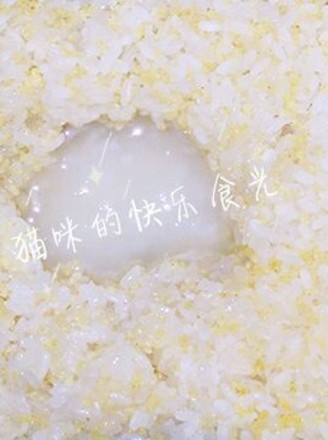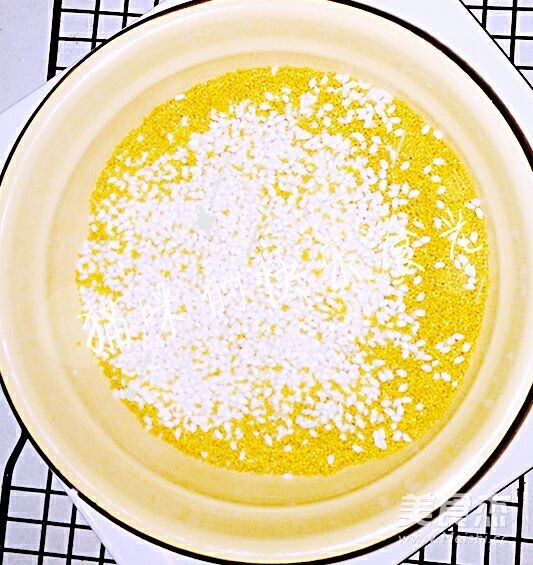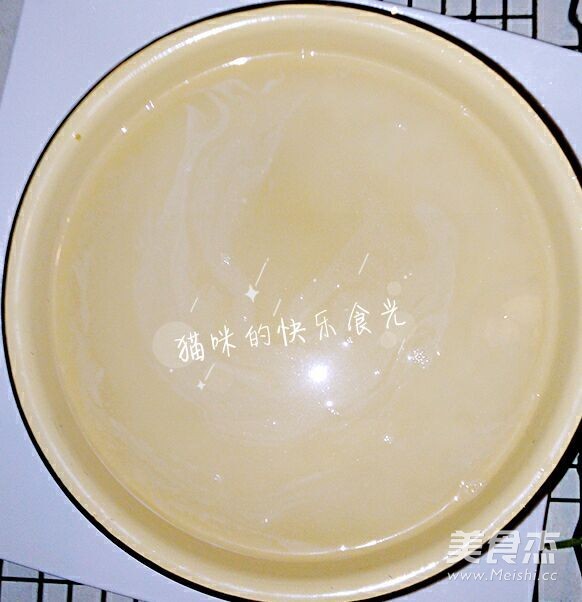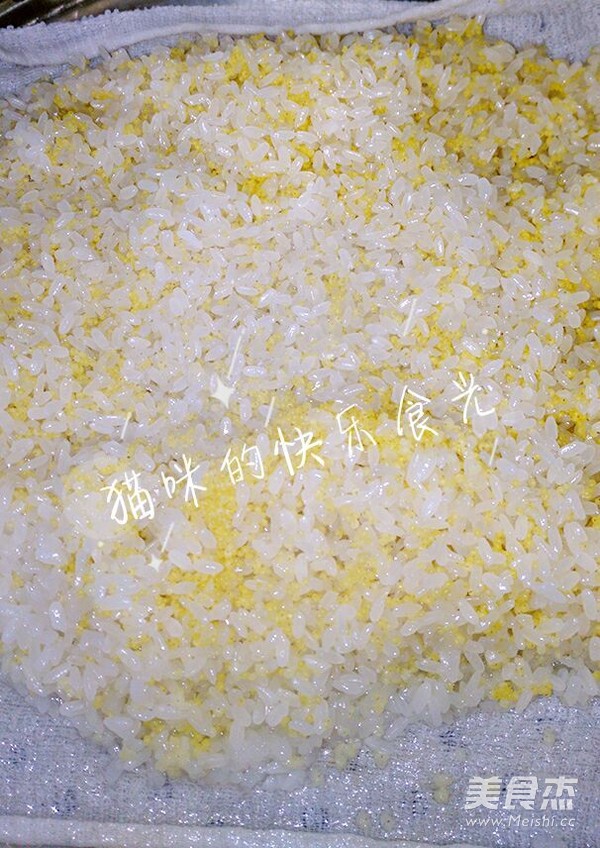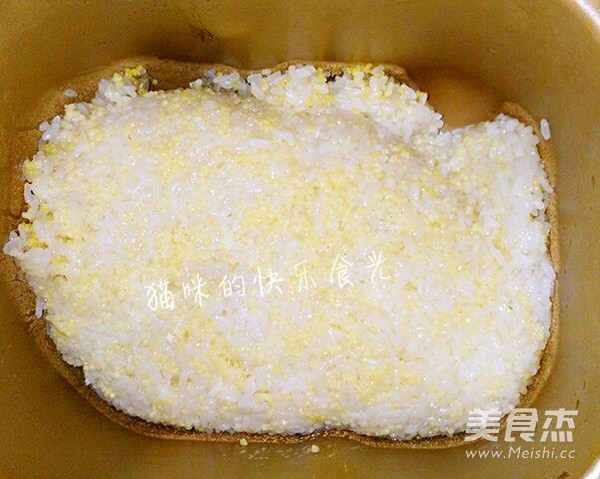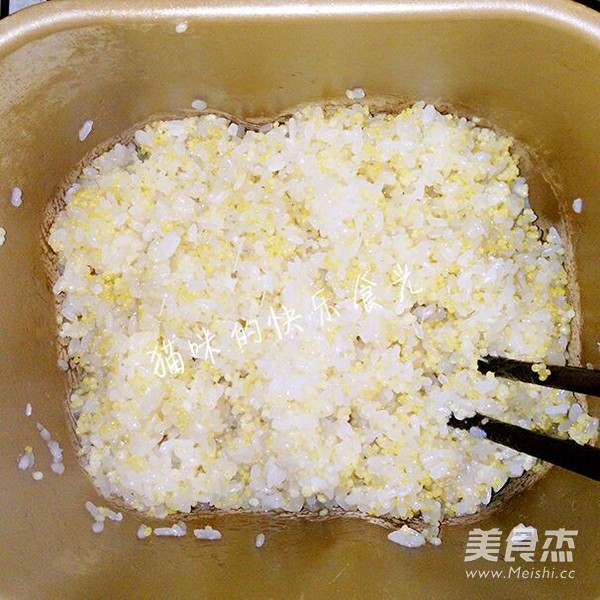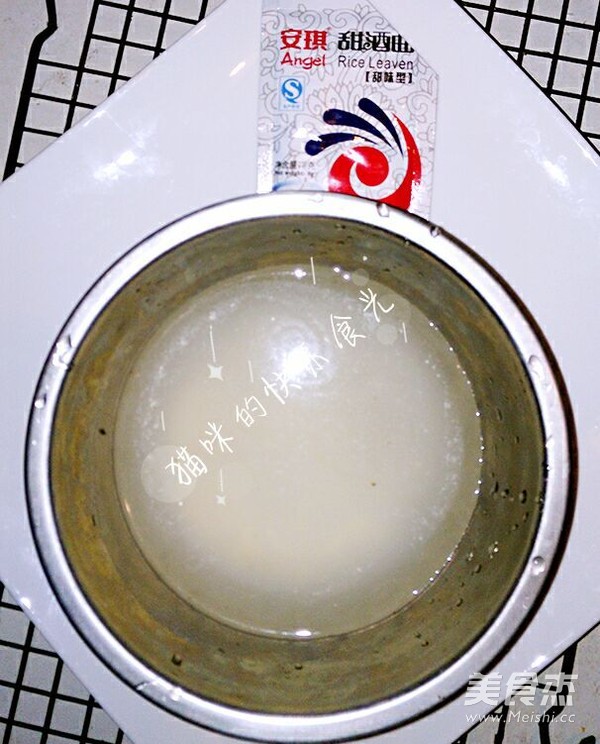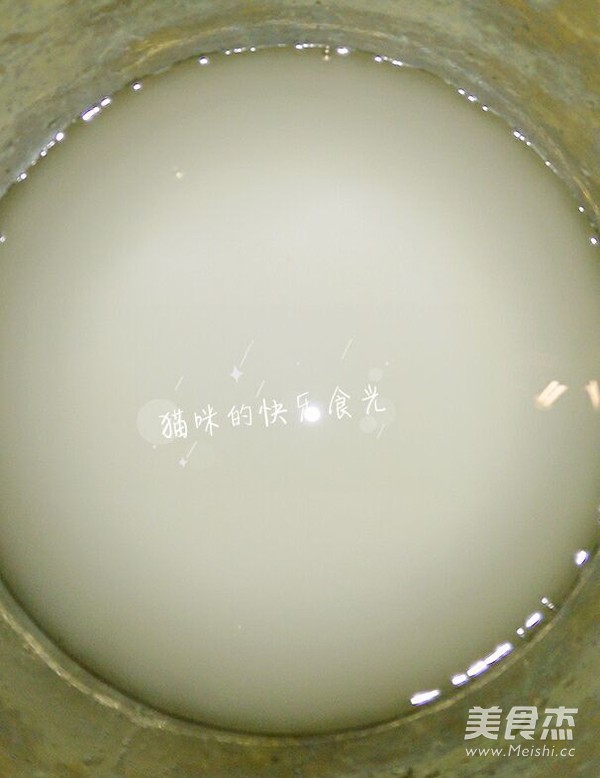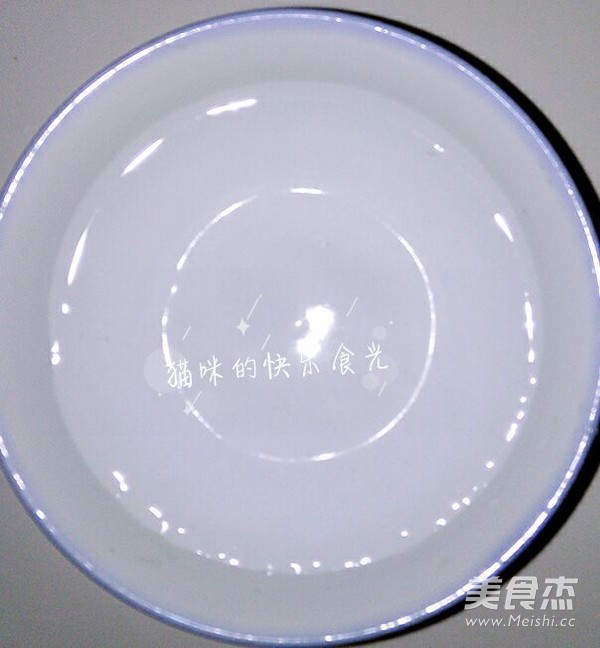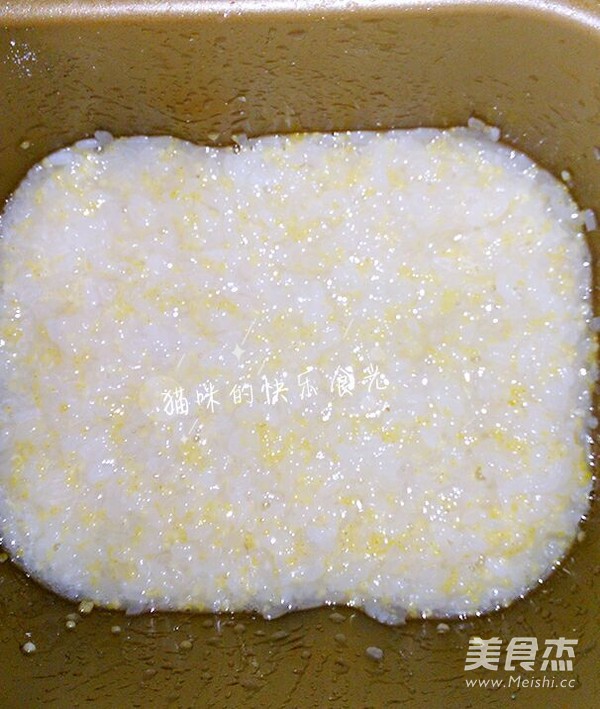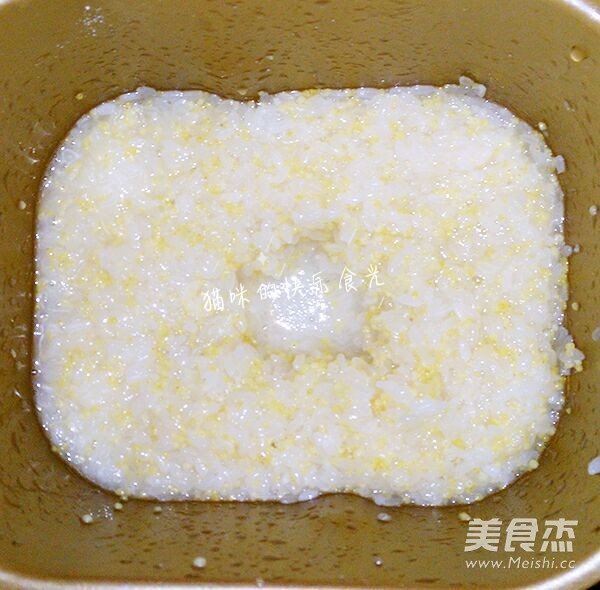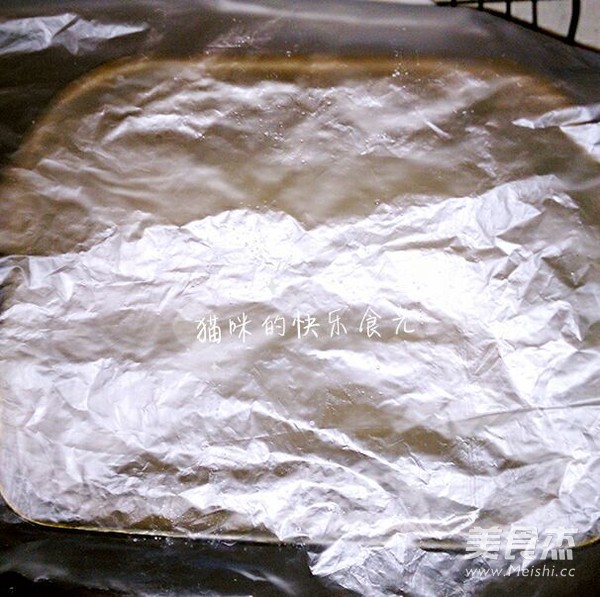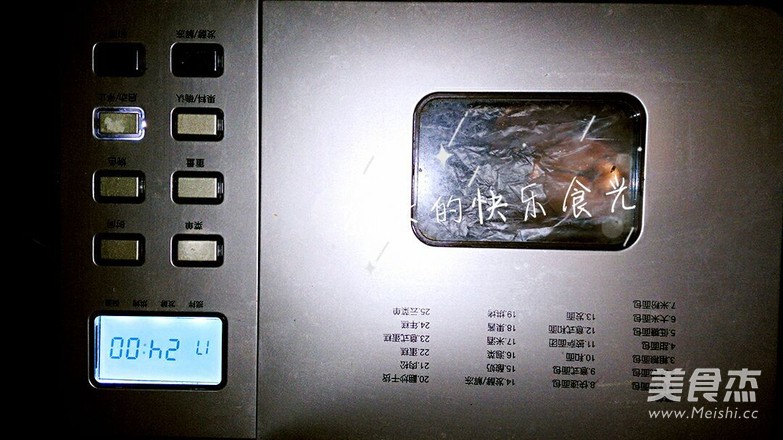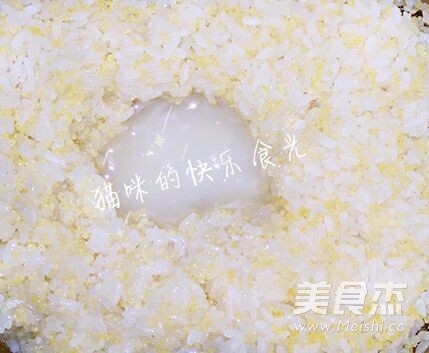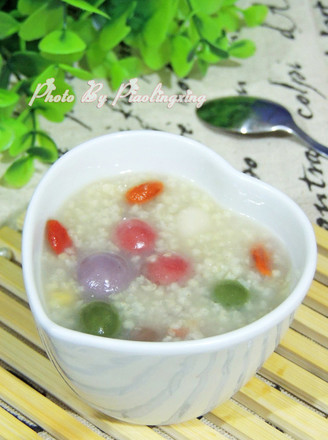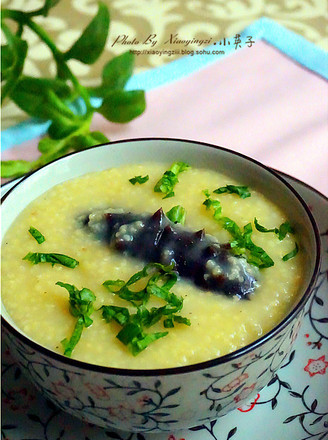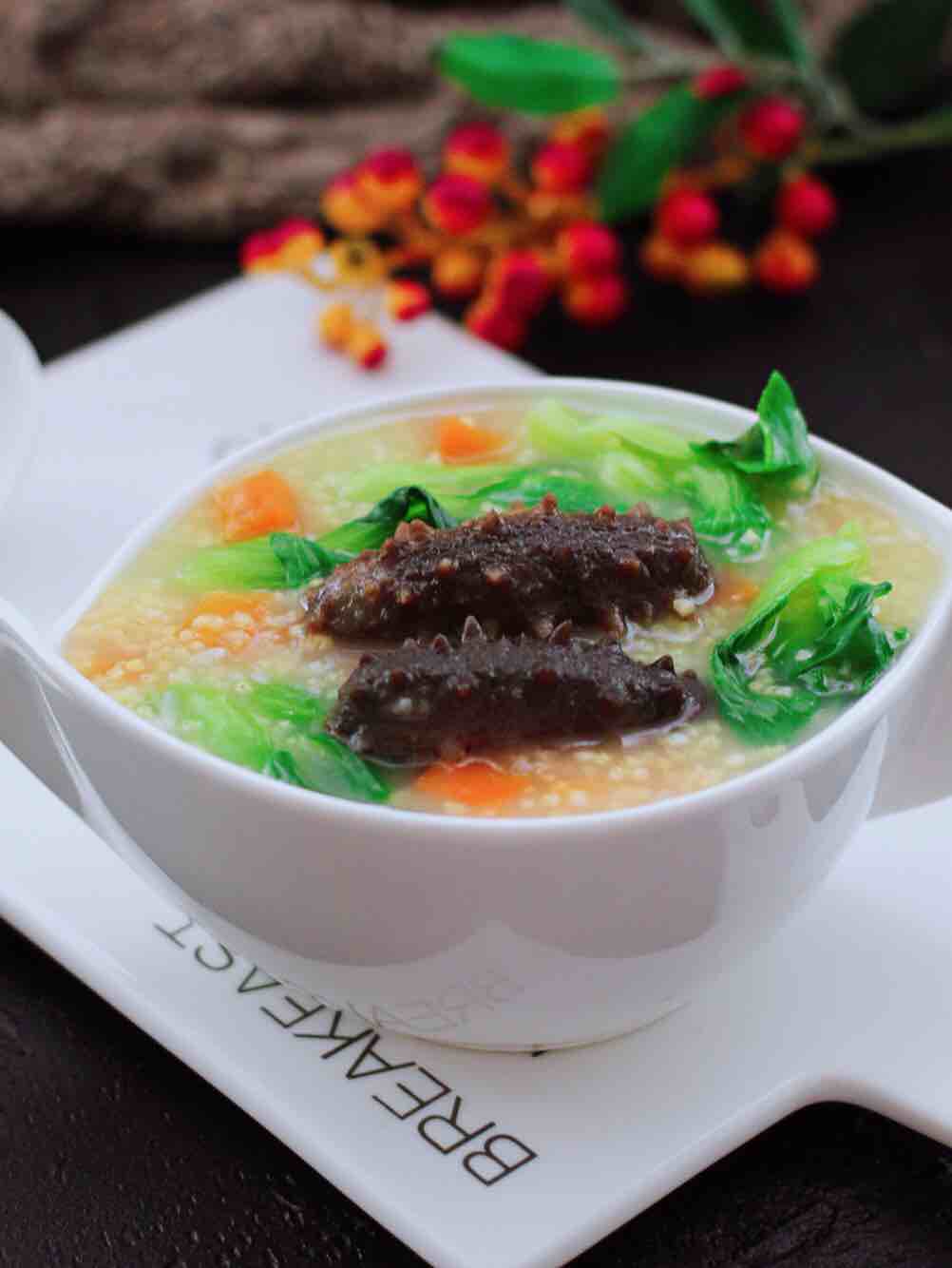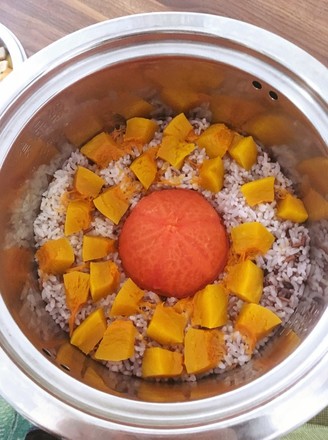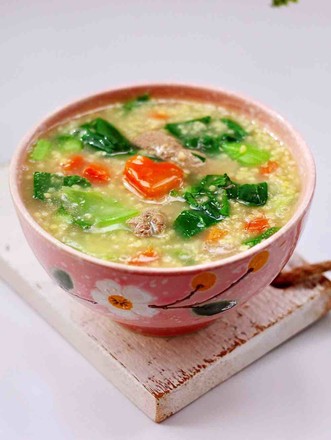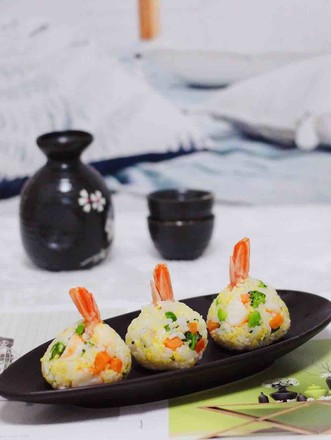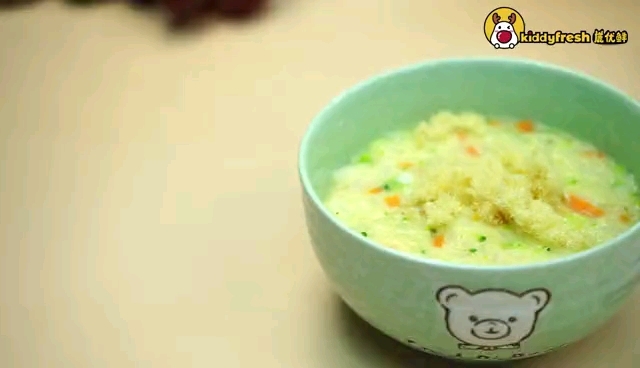Bread Machine to Make Millet Rice Wine
1.
Prepare materials.
2.
Wash the glutinous rice and millet first, and soak in cold water for about 24 hours.
3.
With a twist of your hand, the rice is broken, and this level is OK.
4.
Pour the soaked millet and glutinous rice into a steamer covered with cage cloth. After the water is boiled, turn to medium heat and steam for about 45 minutes.
5.
After cooling slightly, pour it into the bucket of the bread machine.
6.
Chop the rice with chopsticks to facilitate heat dissipation, until it is warm, and you can put your hands inside without burning your hands. (It must not be hot, otherwise the yeast will be scalded to death).
7.
While waiting for the rice to cool, take a clean, oil- and water-free bowl, pour warm water (about 200 grams), and sprinkle the koji powder in.
8.
Stir well.
9.
Prepare 150 grams of cold boiled water.
10.
When the rice is about 30°, pour the koji powder water into the bread bucket, and then add 150 grams of cold boiled water and mix well (if you like to drink, you can add a little more cold boiled water).
11.
Dip the glutinous rice with cold water with your hand or spoon and dig a small hole in the middle.
12.
Cover the top of the bread bucket with plastic wrap, and then cover the bread machine lid.
13.
Start the bread machine rice wine function, 24 hours.
14.
After 24 hours, the rice wine is ready. Open the lid of the bread machine. There will be small bubbles during the fermentation process, so the rice grains will float on the top when they become lighter, so it looks dry and the moisture sinks below. went.
Pour the rice wine into a clean bottle without water and oil, close the lid and store in the refrigerator. Over time, the taste of the wine will become stronger.
Tips:
1. In the process of making rice wine, do not get oil and raw water. All the utensils to be used for wine making need to be blanched or boiled for disinfection in advance, otherwise the rice wine will easily grow hairs and become black.
2. Before steaming the glutinous rice, it is best to drain the water before steaming. The rice grains are elastic, and the rice wine made from the thin rice does not taste good.
3. It is best to store the rice wine in the refrigerator, otherwise it will not taste good if it is too fermented.

